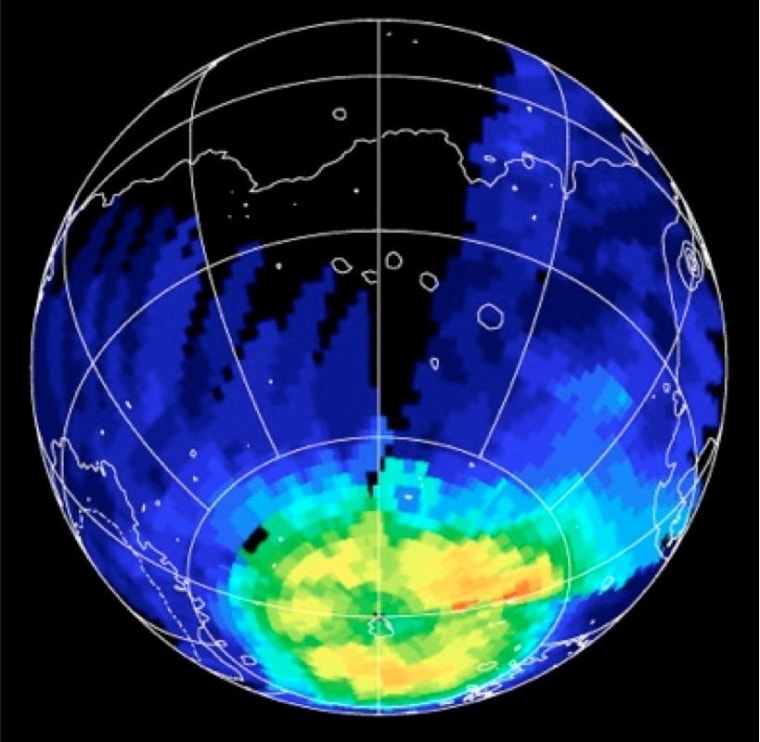A NASA Mars orbiter has been busy since it arrived at the Red Planet late last month.
NASA's $671 million Mars Atmosphere and Volatile EvolutioN mission (Maven for short) is designed to probe Mars' thin atmosphere, to help scientists understand what caused the planet to change from the warm and wet world it was long ago to the cold and dry one it is today.
The spacecraft entered into orbit around Mars on Sept. 21, and it has already beamed back some amazing new data about Mars' upper atmosphere, researchers said.
In Maven's first few weeks of instrument testing at the Red Planet, scientists have already created some of the most complete maps of atomic hydrogen, oxygen, carbon and ozone in the Martian atmosphere ever made. One of Maven's instruments even collected data as energetic particles blasted out by a massive solar eruption made it to Mars. [See amazing MAVEN images]
Maven is still in the "commissioning phase" of its mission, meaning that the probe hasn't started collecting science full-time. The new data were gathered as the spacecraft's ground controllers began turning on its instruments after it arrived at Mars.
"What we're seeing so far is really just a tantalizing teaser of what's to come," Maven principal investigator Bruce Jakosky, of the Laboratory for Atmospheric and Space Physics at the University of Colorado at Boulder, said Tuesday during a NASA news conference.
Scientists working with Maven weren't able to see exactly how the solar energetic particles affected Mars' atmosphere on Sept. 29 because the instruments necessary for that kind of observation weren't functioning in tandem at that time. But Maven researchers say the spacecraft's instruments will be ready to observe the atmosphere during the next Mars-directed solar event.

Scientists think that solar weather events could be partially responsible for the loss of the Martian atmosphere over time.
Ground controllers are now moving MAVEN into lower orbit in order to make more observations of the planet's upper atmosphere and find out how it's escaping into outer space. The probe should begin its primary science mission in about two weeks.
— Miriam Kramer, Space.com
This is a condensed version of a report from Space.com. Read the full report. Follow Miriam Kramer on Twitter and Google+. Follow Space.com on Twitter, Facebook and Google+.